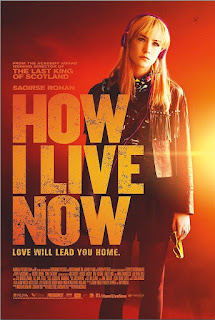I just finished the first volume of the Annotated Sandman. I
thought it was brilliant but when do I not think Neil Gaiman is brilliant? I
like the idea of the Endless, the few permanent anthropomorphic pieces of the
universe that will stick around until the end. The whole series starts when Aleister
Crowley and his cronies are preforming a ritual to capture Death and instead
get Dream. The series then follows what happens in the years that Dream is imprisoned
and the things he has to do to set his realm back to rights. Of course being a
comic and working closely with DC, there are quite a few appearances from other
superheroes and villains. Constantine and Arkham Asylum both show up in the
first few issues as well as the original Sandman from the 70s. There are seven of
the Endless but by the end of the first 20 issues you are only really
introduced to 3 and a Fourth is mentioned. So I’m eager to see how the rest of the
Endless fit in and interact.
There are a few stand-alone issues as a break after a lot of
the major storyline is done for the first part. You also get a sense of Dream’s
history with mortals and surprisingly his love life. My favorite was titled A
Dream of A Thousand cats. A cat is wronged by her owners and begs and prays for
answers from every deity and demigod she could think of, Dream is the only one
who answers. He spins her a tale of how the world used to be, where humans were
tiny and hunted and cats were gargantuan and rulers. By humans using the power
of dreams, they changed things to be (and to always have been) the other way
around and all it took was one thousand people all believing the same dream. So
the cat travels the world spreading her message from Dream that if a thousand cats
all believe and dream the same dream then the world can be put back into its
proper place. The (new) Dr. Who series 3 Finale is very reminiscent of this
comic and may even have been inspired by it.
Did I mention I think Neil Gaiman is brilliant? The art work
is gorgeous. While I didn’t pick this up for the annotated parts (and I’ve
never read an annotated work before), the notes were useful in picking out who
was important to remember and seeing what cool little references and Easter
Eggs were slipped in there. It was also a big help to know the years from the comic
cameos and who they were. I never would have been able to find half that stuff
out without much internet research since I’m not a huge comic fan. It’s a very
dark kind of series so far. Even the stand alone issues aren’t extremely light
hearted and fun but they do raise the mood for the more serious and overarching
story line. These stories arches do tend to end on an “everything will be fine
eventually” note which makes dealing with the more disturbing storylines easier.
If you like serious (but entertaining) stories, if you like comics, if you like…anything,
go pick this up from the library if you can’t find it in stores. Now I’m off to
return this one and pick up volume 2.







